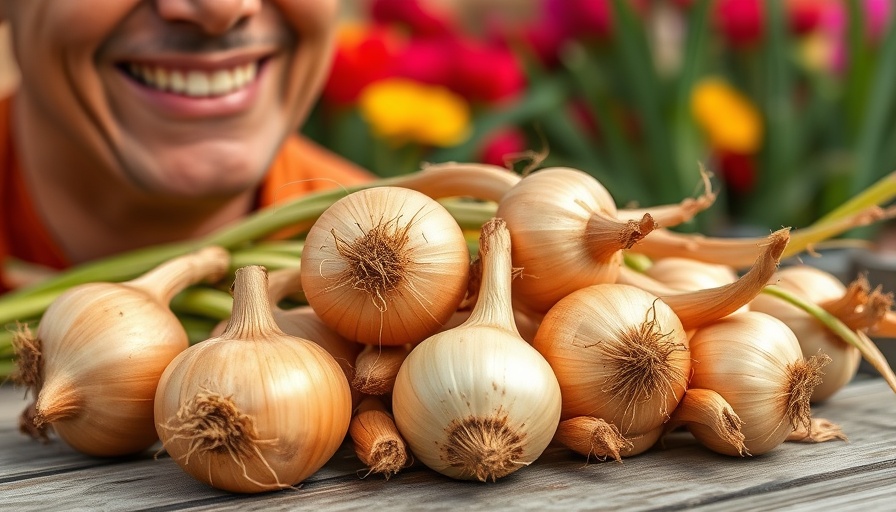
The Basics of Onion Harvesting: What You Need to Know
Harvesting onions may seem straightforward, and indeed, it is often described as one of the easiest tasks in the garden. However, the crux of success lies not in the act of pulling them up, but in the timing and the post-harvest care. Let's delve into the secrets of a successful onion harvest in this guide, perfect for enthusiasts and novice gardeners alike.
In 'Harvesting Onions: The Complete Guide,' the video discusses crucial tips for maximizing your onion harvest. We're expanding on those insights to help you ensure a successful gardening experience.
Timing Your Harvest for Maximum Yield
So when is the right moment to harvest those shimmering bulbs from your garden? The key lies in observing the foliage. When the green tops begin to turn yellow and flop over naturally, your onions are signaling readiness—a cue to harvest within two weeks. Healthy bulbs do not just happen; they require meticulous attention to detail throughout their growth cycle.
For optimal results, stop fertilizing about a month before harvest to prevent excessive foliage growth, which can detract from bulb development. Additionally, halt watering a week prior. Onions should be harvested while dry for improved storage longevity, allowing you to enjoy your hard work well into the winter months.
The Harvesting Process: Techniques to Preserve Your Bulbs
When it’s finally go-time, remember: gentle handling is critical. Excessive force can damage the bulbs. Begin by carefully excavating around them to loosen the soil before lifting. Once harvested, let the dirt shake off, but refrain from washing. This practice is essential as moisture can lead to rot while in storage.
A crucial step following the harvest involves 'curing' your onions. Hang them in a cool, dry place, bulbs facing downward for about two weeks. This allows the outer layers to dry, forming a protective shield that enhances their storage life—effectively creating your onions' very own armor.
Post-Harvest Care: Storage Tips for Longevity
Once the curing process is complete, trim the roots and cut the stems back to about two inches above the bulb. With this final touch, your onions are ready for storage. Keep them in a cool, dry place and enjoy the fruits of your labor up to six months, varying by onion type. Remember, sweet onions typically don’t store as long as their spicier counterparts.
Why Onions Matter: A Nutritional Perspective
Beyond the cultivation techniques, understanding the nutritional value adds yet another layer of importance to growing onions. These humble bulbs are rich in vitamins and minerals, offering health benefits ranging from anti-inflammatory properties to heart health support. Integrating home-harvested onions into your meals not only elevates flavors but also promotes healthy living.
Your Next Steps: Join the Gardening Community
As you embark on this onion harvesting journey, know that you are part of a larger community passionate about growth and sustainability. If you find joy in these gardening tips and techniques, connect with fellow gardeners for more insights and experiences. Your next gardening adventure awaits!
For those eager to learn more about vegetable gardening or other helpful tips, check out Emily’s online course, Vegetable Gardening Basics, and enhance your green thumb skills!
 Add Row
Add Row  Add
Add 




Write A Comment